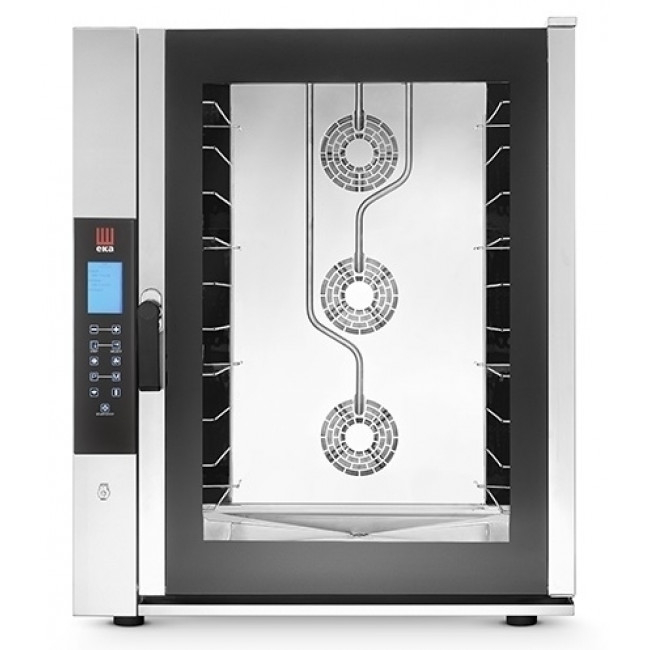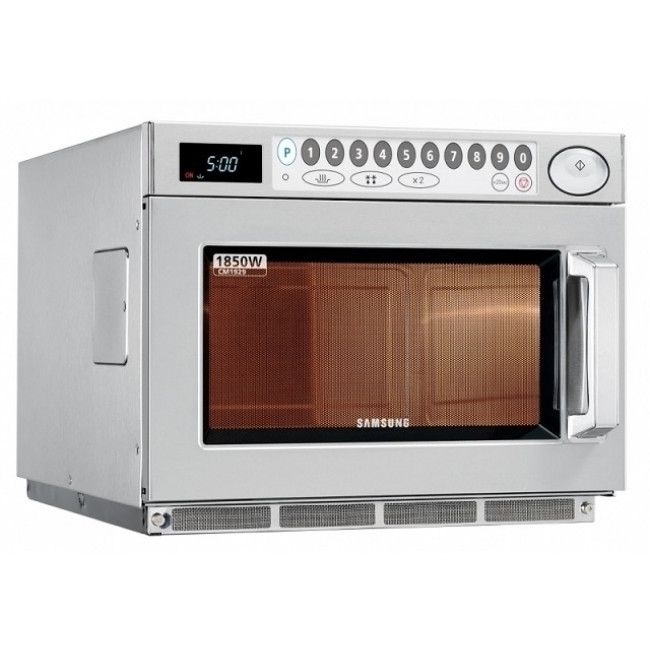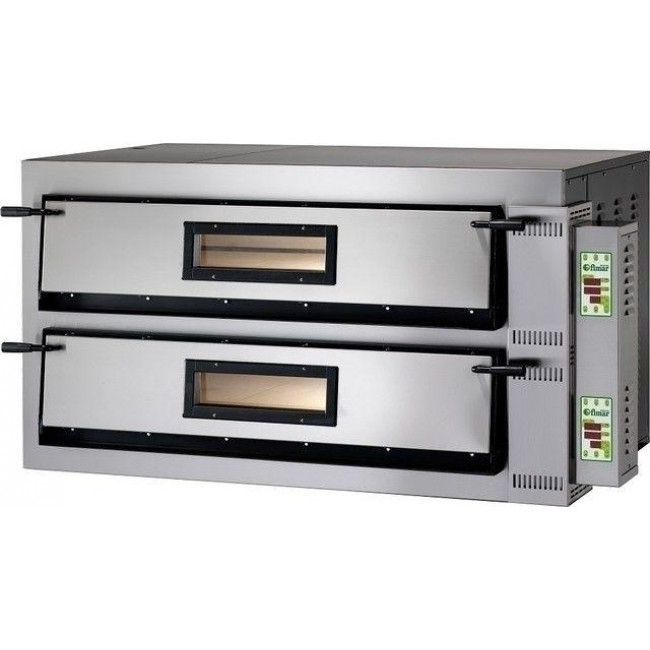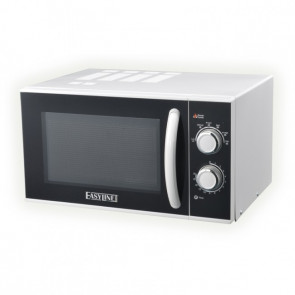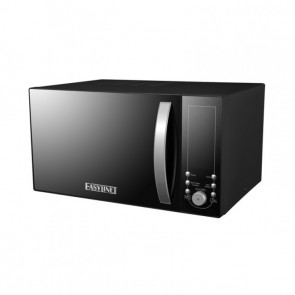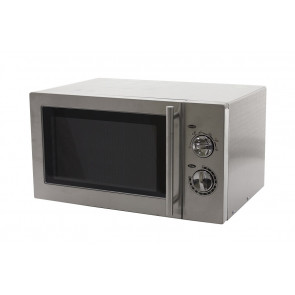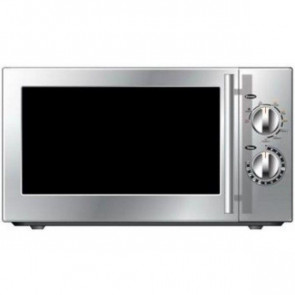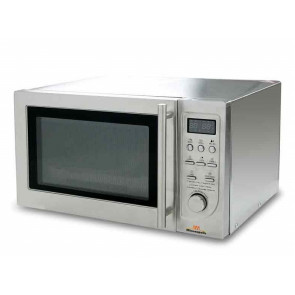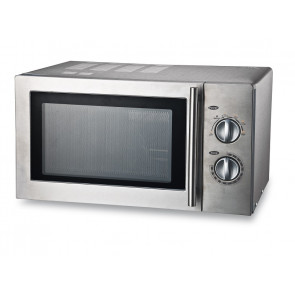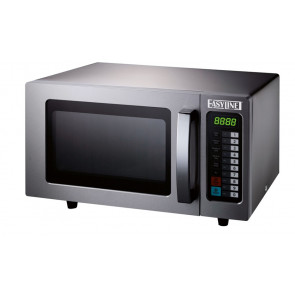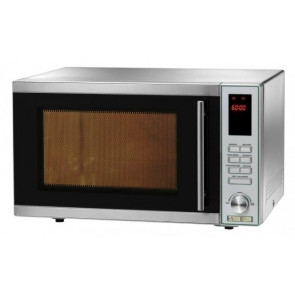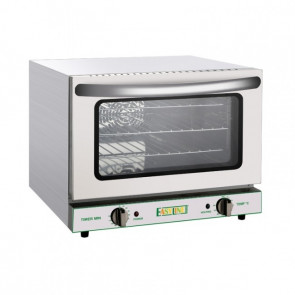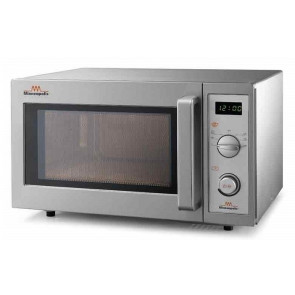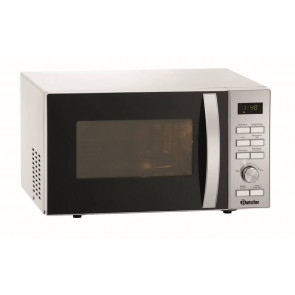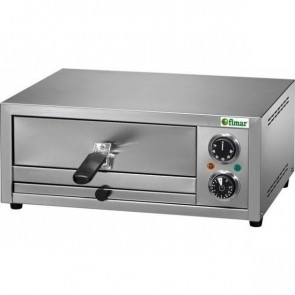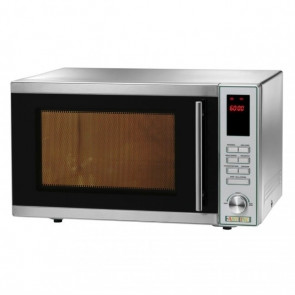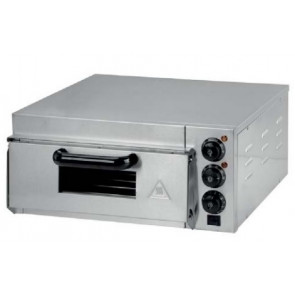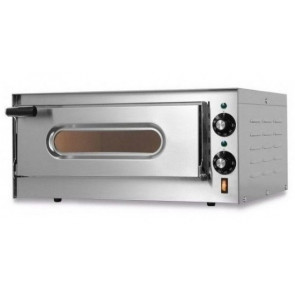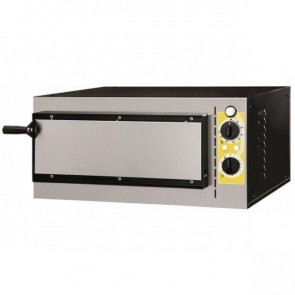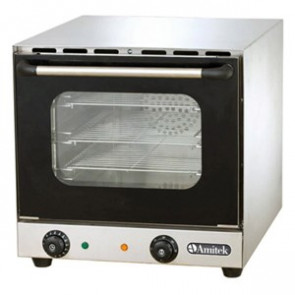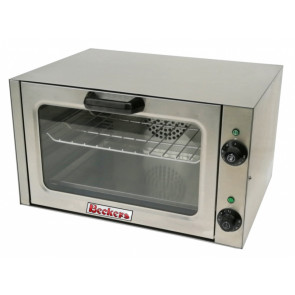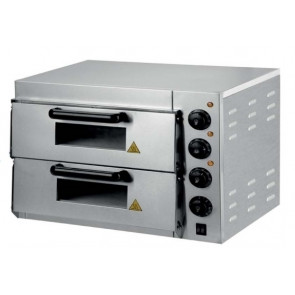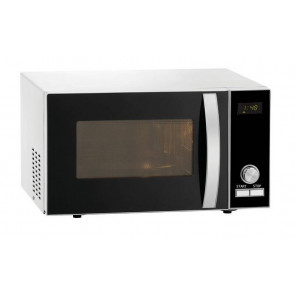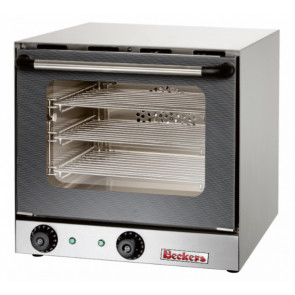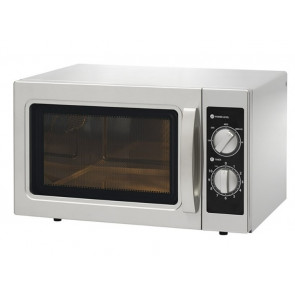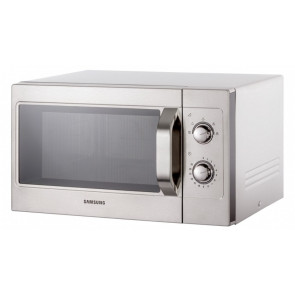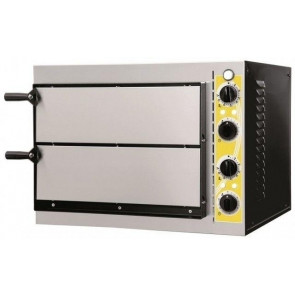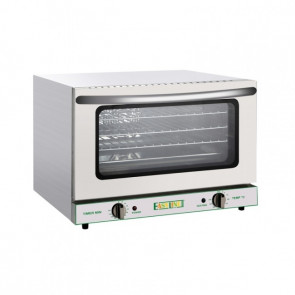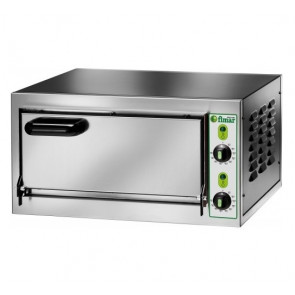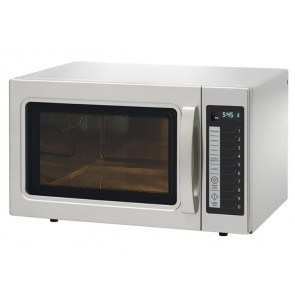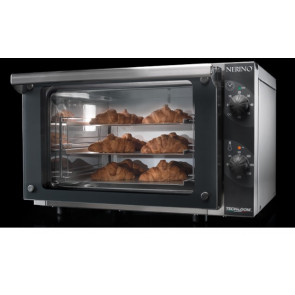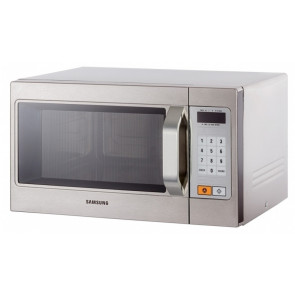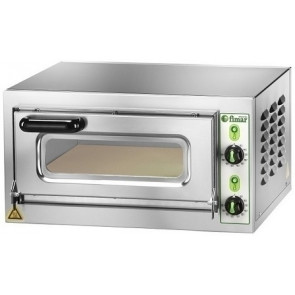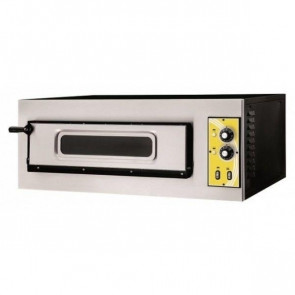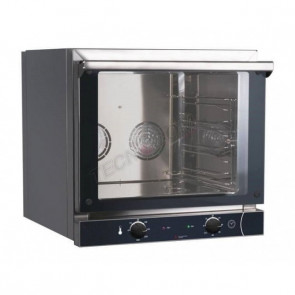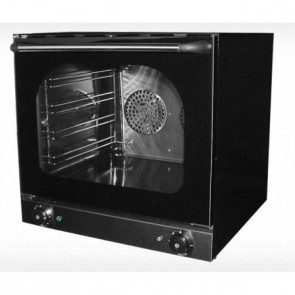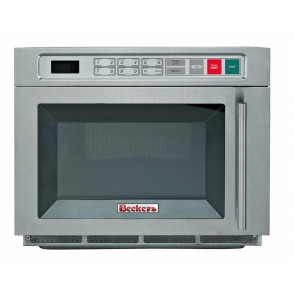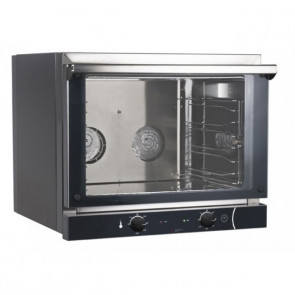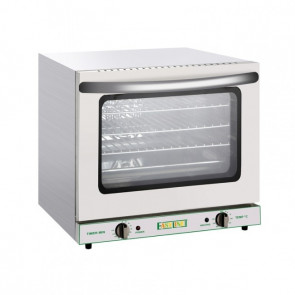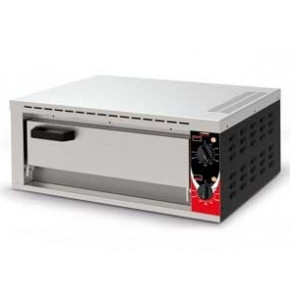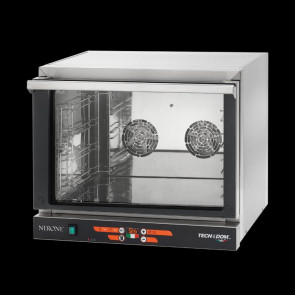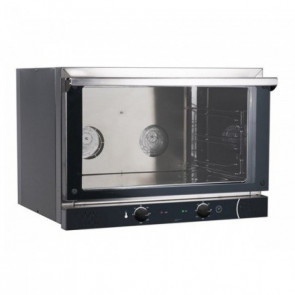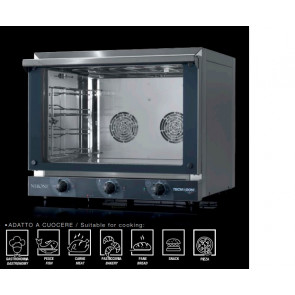Professional Ovens complete online catalogue and prices
Buy online professional ovens of high quality and regularly certified for catering. Professional electric ovens are able to meet needs related to various catering sectors, browse the complete online catalogue and select your professional oven by selecting it among various types of models equipped with a system for the temperature control and humidity, to ensure the best results while cooking. Our gastronomy ovens are available online at the best quality/price ratio.
-
Fimar Microwave Oven Model M25LZS Mechanical controls Defrost function
€88.20 Excl. Tax: €107.60 Incl. Tax: -
Fimar Microwave Oven Model P90DZH Digital Controls Defrost Function
€112.20 Excl. Tax: €136.88 Incl. Tax: -
Beckers Microwave oven made of stainless steel Model MWO-A3
€141.30 Excl. Tax: €172.39 Incl. Tax: -
Beckers Combined microwave oven with Grill 5 power levels MODEL MWO-A5-GR
€160.00 Excl. Tax: €195.20 Incl. Tax: -
Sirman Microwave oven Minneapolis Model WD B 900 COMBI 5 power levels
€201.00 Excl. Tax: €245.22 Incl. Tax: -
Sammic Professional microwave oven MODEL HM-910 Power 900W
€204.75 Excl. Tax: €249.80 Incl. Tax: -
Fimar Digital microwave oven Model EM025FJT
€219.00 Excl. Tax: €267.18 Incl. Tax: -
Fimar Microwave oven with grill Easyline Model MF914 Digital controls Defrost Function
€224.50 Excl. Tax: €273.89 Incl. Tax: -
Fimar Ventilated convection oven Model FD21 Capacity N° 3 Grids GN1/2 Mechanical timer 0-120’ Potenza 2.1 Kw
€251.15 Excl. Tax: €306.40 Incl. Tax: -
Sirman Microwave oven Minneapolis Model WP1000 PFM 6 power levels
€254.50 Excl. Tax: €310.49 Incl. Tax: -
Ristosubito Combined Microwave 900 Watt KAR Model B711
€255.50 Excl. Tax: €311.71 Incl. Tax: -
Fimar Electric pizza oven Model FP
€264.50 Excl. Tax: €322.69 Incl. Tax: -
Fimar Stainless steel Microwave oven with convection, grill Model MC2452 Digital controls
€264.50 Excl. Tax: €322.69 Incl. Tax: -
Beckers Electric pizza oven with one cooking chamber Model EP1 Power: kW 2
€267.50 Excl. Tax: €326.35 Incl. Tax: -
Ristosubito Electric pizza oven RI 1 cooking chamber Model Sirena G
Regular Price: €475.15 Excl. Tax: €579.68 Incl. Tax:
Special Price €279.50 Excl. Tax: €340.99 Incl. Tax:
-
Ristosubito Electric pizza oven PF 1 cooking chamber N. Pizza 1 (Ø cm 32) Model MAXINE 1/40
€310.50 Excl. Tax: €378.81 Incl. Tax: -
Amitek Electric manual convection oven Trays capacity 3 GN 1/2 Model WG200
€329.00 Excl. Tax: €401.38 Incl. Tax: -
Beckers Convection oven Model S2 Support for 3 grids Power: 2500 W / 220/230 V
€352.50 Excl. Tax: €430.05 Incl. Tax: -
Beckers Electric pizza oven with two cooking chambers Model EP1 + 1 Power: kW 3
€353.75 Excl. Tax: €431.58 Incl. Tax: -
Ristosubito Combined Microwave 900 Watt KAR Model B711SELF
€356.40 Excl. Tax: €434.81 Incl. Tax: -
Beckers Convection oven Model S3 - 3 aluminum grids GN 1/2 included 325x265 mm Power: 2750 W / 220∾230 V
€366.25 Excl. Tax: €446.83 Incl. Tax: -
Amitek Professional Microwave Oven Model KMW300M Capacity 29 Lt
€366.60 Excl. Tax: €447.25 Incl. Tax: -
Ristosubito Professional Samsung microwave oven Manual controls 5 power levels 30 programs 1 magnetron MODEL CM1099
€377.40 Excl. Tax: €460.43 Incl. Tax: -
Ristosubito Electric pizza oven PF 2 cooking chambers Model MAXINE 2/40
€380.25 Excl. Tax: €463.91 Incl. Tax: -
Fimar Ventilated convection oven Model FD47 Mechanical timer 0-120’ Capacity N° 4 Grids 45x33 cm Power 2.5 Kw
€392.80 Excl. Tax: €479.22 Incl. Tax: -
Fimar Electric pizza oven Model MICRO1C MANUAL control panel 1 cooking chamber
€392.80 Excl. Tax: €479.22 Incl. Tax: -
Amitek Professional Microwave Oven Model KMW300D Capacity 29 Lt
€393.15 Excl. Tax: €479.64 Incl. Tax: -
Tecnodom Ultra compact standard convection oven 2/3 Model Nerino3
€407.50 Excl. Tax: €497.15 Incl. Tax: -
Ristosubito Professional Samsung microwave oven MODEL CM1089 Digital controls 5 power levels 20 programs 1 magnetron
€414.30 Excl. Tax: €505.45 Incl. Tax: -
Fimar Electric pizza oven Model MICROV1C MANUAL control panel 1 cooking chamber
€422.20 Excl. Tax: €515.08 Incl. Tax: -
Ristosubito Electric pizza oven PF 1 cooking chamber N. Pizza 1 (Ø cm 45) Model MAXINE 1/50 Glass
€429.75 Excl. Tax: €524.30 Incl. Tax: -
Tecnodom Electric Manual Convection oven Ventilated Trays capacity 4 - 440x350 Model FEM04NE595V
Regular Price: €520.00 Excl. Tax: €634.40 Incl. Tax:
Special Price €432.50 Excl. Tax: €527.65 Incl. Tax:
-
Beckers Electric convection oven Model S1ECO for gastronomy, bakery and pastry Capacity n. 4 aluminum trays cm 44x31,5
€433.75 Excl. Tax: €529.18 Incl. Tax: -
Beckers Professional microwave oven 20 programs Double magnetron Power: 900-1800 W Model MWOD1PRO
€446.25 Excl. Tax: €544.43 Incl. Tax: -
Tecnodom Electric Manual Convection oven Trays capacity 4 GN 1/1 Model FEM04NEGNV
Regular Price: €550.00 Excl. Tax: €671.00 Incl. Tax:
Special Price €446.50 Excl. Tax: €544.73 Incl. Tax:
-
Fimar Ventilated convection oven Model FD66 Capacity N° 4 Grids 45x33 cm Mechanical timer 0-120’ Power 2.8 Kw
€448.90 Excl. Tax: €547.66 Incl. Tax: -
Sirman Pizza Oven Model STROMBOLI Electric
€468.20 Excl. Tax: €571.20 Incl. Tax: -
Tecnodom Electric Digital Convection oven Trays capacity 4 GN 1/1 Model FED04NEGNV
Regular Price: €570.00 Excl. Tax: €695.40 Incl. Tax:
Special Price €469.00 Excl. Tax: €572.18 Incl. Tax:
-
Tecnodom Electric Manual Convection oven Trays capacity 3 - 600x400 Model FEM03NEPSV
Regular Price: €576.00 Excl. Tax: €702.72 Incl. Tax:
Special Price €471.00 Excl. Tax: €574.62 Incl. Tax:
-
Tecnodom Electric Manual Convection oven Ventilated and with Grill Trays capacity 4 - 440x350 Model FEMG04NE595V
Regular Price: €570.00 Excl. Tax: €695.40 Incl. Tax:
Special Price €472.50 Excl. Tax: €576.45 Incl. Tax:
Apply filters to refine your search
- Category
-
- Trays
- Supply
- Manufacturer
- Number of rooms
- Number of Pizzas
- Control panel
- Price
